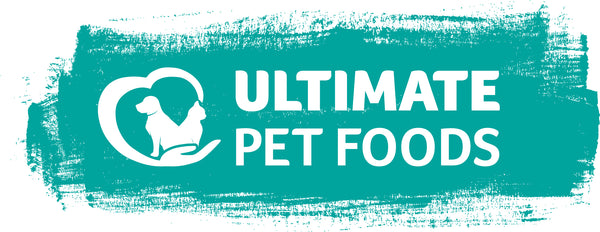
How to Transition Your Dog to Hydrolysed Dog Food
Share
Switching your dog to hydrolysed dog food can be a game-changer for dogs with food sensitivities, allergies, or digestive issues. However, transitioning to a new diet should be done gradually to prevent digestive upset and ensure acceptance.
In this guide, we’ll cover why a slow transition is important, step-by-step instructions, and tips to help picky eatersadapt to hydrolysed food.
Why a Gradual Transition is Important
Dogs have sensitive digestive systems, and a sudden switch in food can cause gastrointestinal issues such as:
✅ Diarrhea or loose stools
✅ Vomiting
✅ Gas and bloating
✅ Refusal to eat
A slow transition allows your dog’s stomach and gut bacteria to adjust to the new food, reducing the risk of discomfort.
Step-by-Step Guide to Switching to Hydrolysed Dog Food
Step 1: Introduce the New Food Slowly (Days 1-3)
✔ Start by mixing 25% hydrolysed dog food with 75% of your dog’s current food.
✔ Observe your dog’s reaction—check for any digestive upset or refusal to eat.
✔ If your dog is handling the transition well, proceed to the next stage.
📝 Tip: If your dog has a history of food allergies, consult your vet before starting the transition.
Step 2: Increase the Ratio Gradually (Days 4-6)
✔ Adjust the portions to 50% hydrolysed dog food and 50% current food.
✔ Continue to monitor your dog for any signs of stomach discomfort.
✔ If your dog experiences diarrhea, slow down the transition by staying on this step longer.
Step 3: Majority of the New Food (Days 7-9)
✔ Now, feed 75% hydrolysed food with only 25% of the old food.
✔ Your dog should now be more accustomed to the new diet.
✔ Keep an eye on their energy levels, coat health, and stool quality.
Step 4: Complete the Transition (Day 10+)
✔ By now, your dog should be fully on 100% hydrolysed dog food.
✔ If your dog is still hesitant, try adding warm water or a topper to enhance flavor.
🎉 Success! Your dog is now on a fully hydrolysed diet.
Tips for Picky Eaters
Some dogs may be reluctant to eat hydrolysed food due to its unique smell and texture. If your dog is refusing to eat:
🐾 Warm up the food slightly to enhance aroma.
🐾 Add a small amount of warm water to soften kibble.
🐾 Use a slow feeder bowl or puzzle toy to make mealtime fun.
🐾 Stick to a consistent feeding schedule to encourage appetite.
🐾 Avoid giving treats or table scraps that could interfere with the transition.
Common Mistakes to Avoid
🚫 Rushing the transition: If your dog experiences diarrhea or vomiting, slow down the process.
🚫 Mixing with too many extras: Avoid adding toppers that could trigger allergies.
🚫 Giving up too soon: Some dogs take longer to adjust—be patient!
How Long Until You See Results?
Most dogs show improvements in digestion and skin health within 4-6 weeks of switching to hydrolysed food. However, every dog is different, and some may take longer.
If symptoms persist, consult your veterinarian to rule out underlying conditions.
Final Thoughts
Transitioning your dog to hydrolysed dog food is a gradual process that requires patience. By following a step-by-step approach and monitoring your dog’s health, you can make the switch smooth and stress-free.
💡 Has your dog switched to hydrolysed dog food? Share your experience with us.
